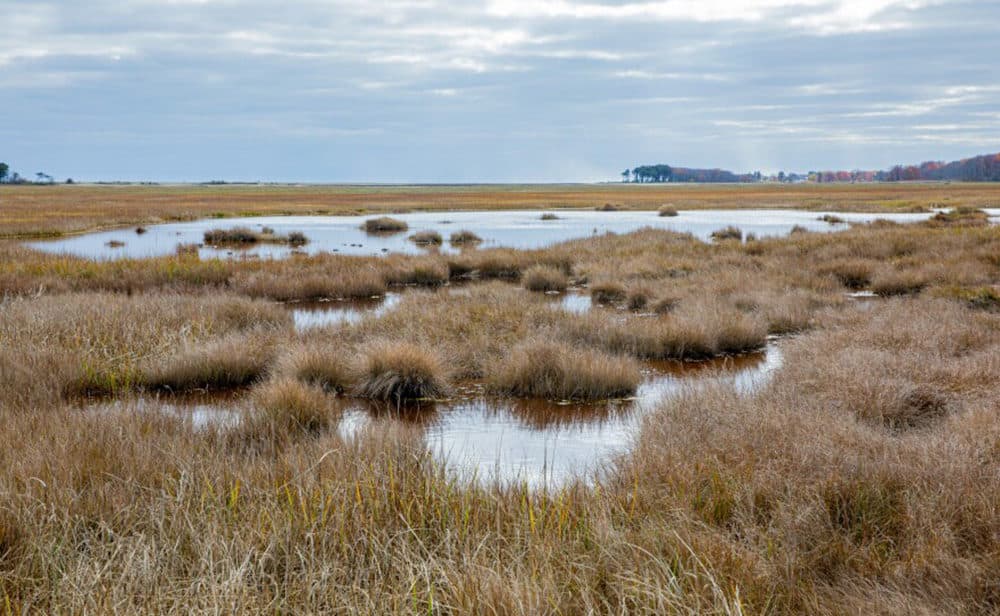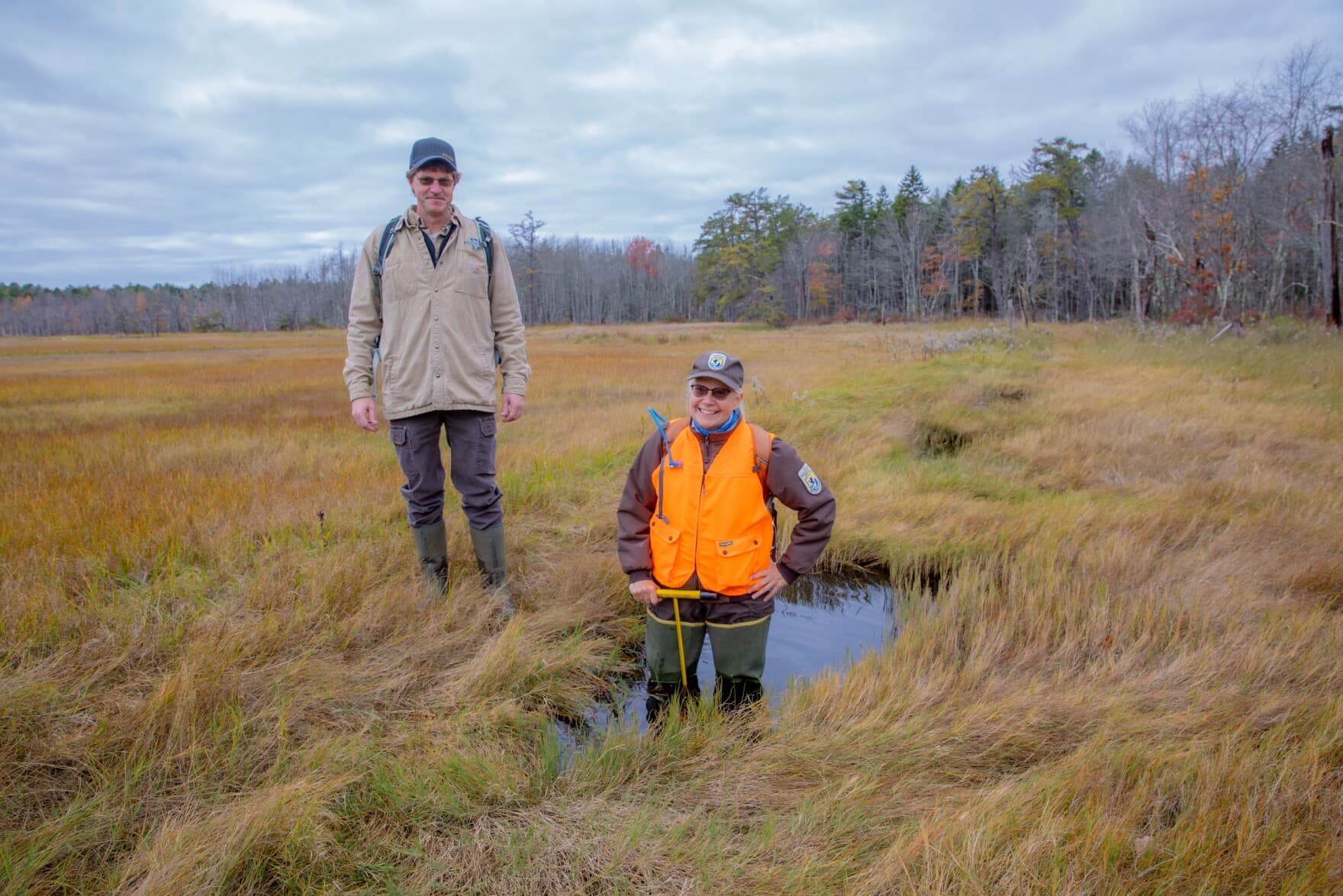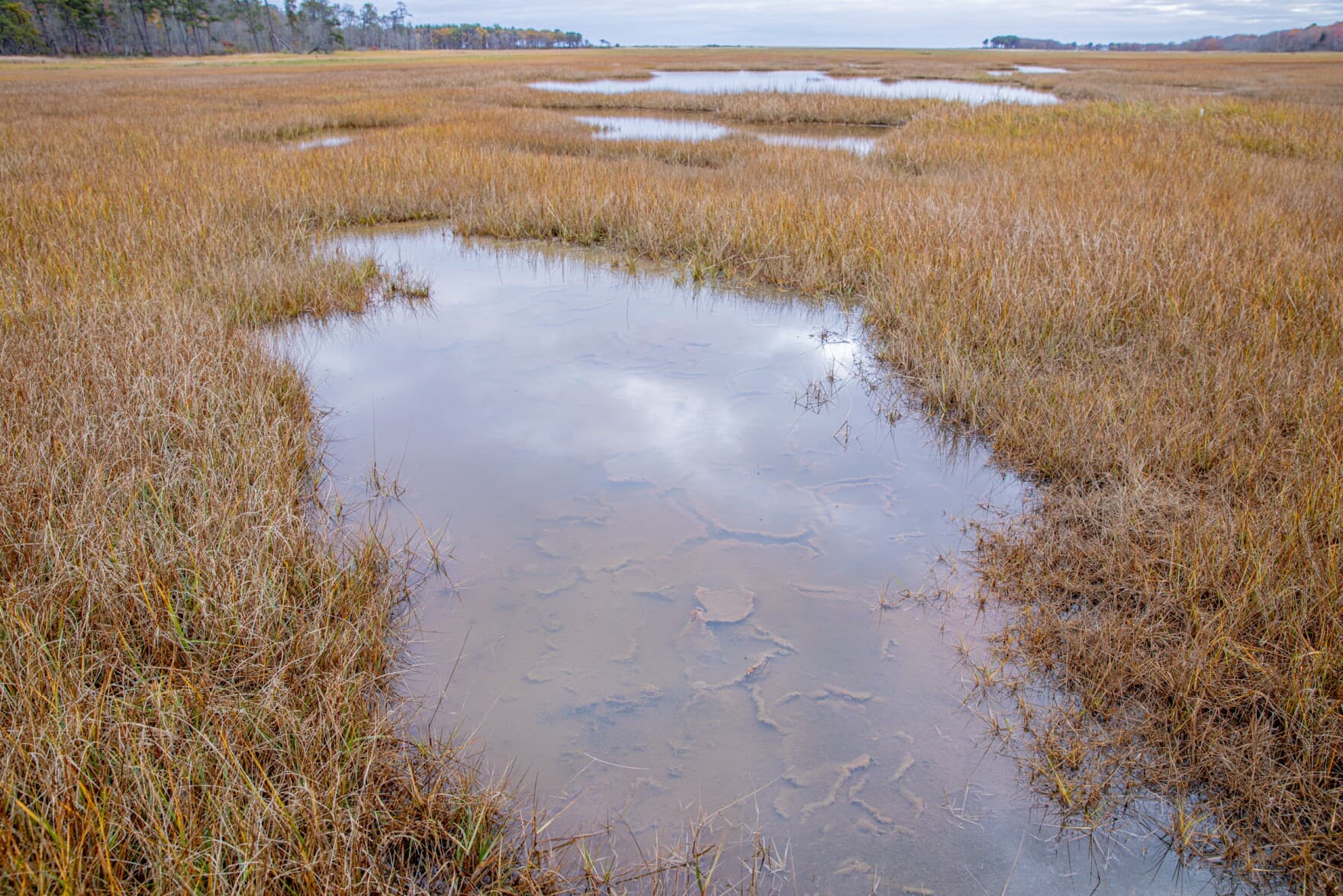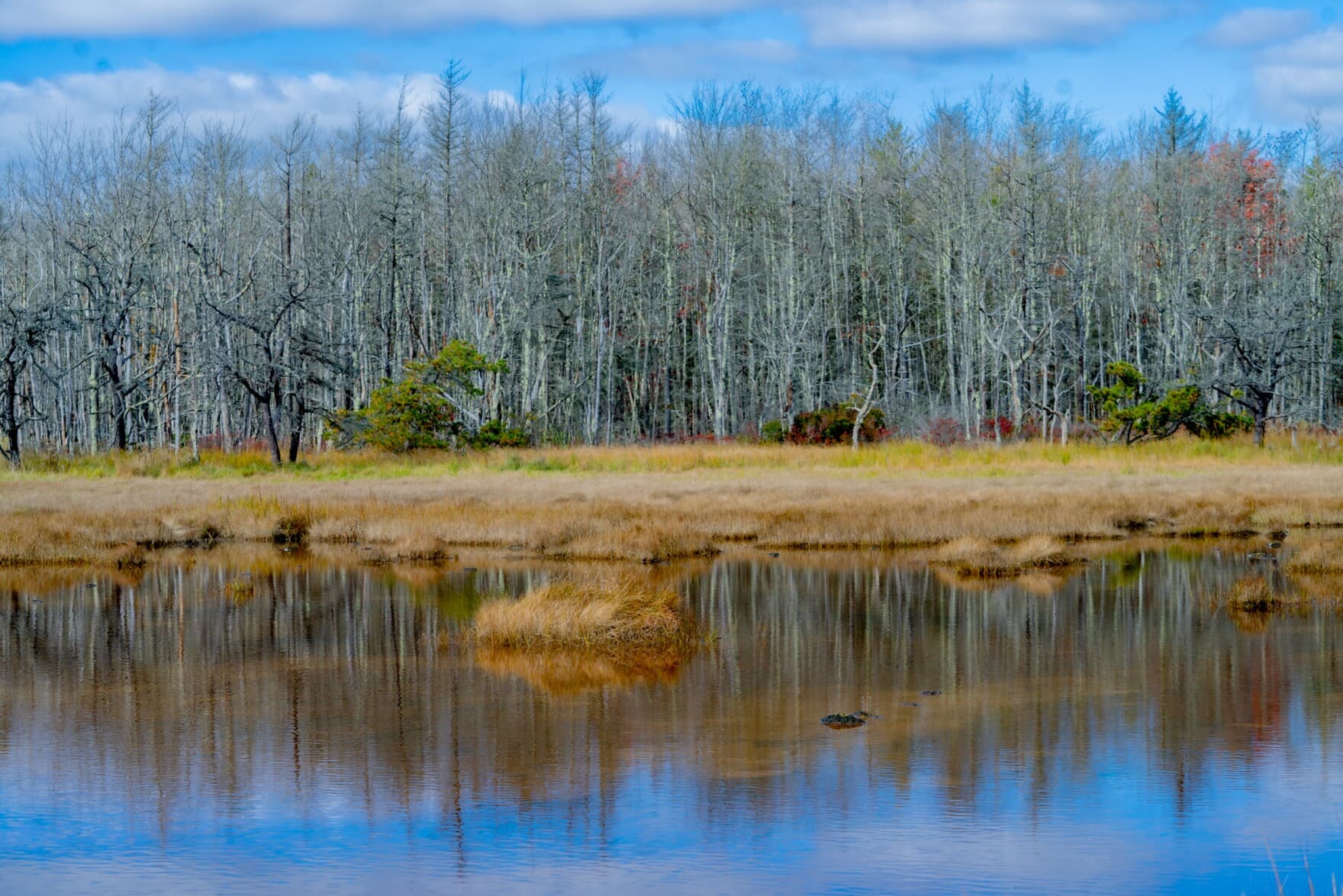Advertisement
Salt marshes soak up carbon. Restoring them is key to fighting climate change
Resume
Marshes have been called the "kidneys of the landscape" because they clean pollutants from water. They also protect communities against storm surges and erosion, and are better than forests at capturing carbon, so are considered critical in the fight against climate change. But when they're under stress, they degrade, and actually release carbon into the atmosphere. Scientists in Maine recently unlocked a mystery that helps explain what's happening to marshes —and how to restore them.
Even though the Rachel Carson Wildlife Refuge is tucked into one of the most populated counties in Maine, it's still possible to get lost. Especially when you're looking for a salt marsh only accessible through dense forest.
"Well, I think we’re going to have to bushwhack," says Susan Adamowicz as she begins the journey to the marsh.
Refuge scientist Susan Adamowicz is a salt marsh scientist, but she considers herself a planet doctor. And on this day, she's checking one of her patients: a salt marsh that's among the 3,000 acres of marsh that are protected at Rachel Carson . The entire refuge is more than 9,000 acres. As Adamowicz works her way through the woods, stepping over tree stumps and bending to avoid branches, she's joined by Geoff Wilson. He's manager of the Bear Creek Wildlife Sanctuary in Massachusetts, which also does work restoring sensitive ecosystems. Eventually, the ground changes. It's more wet. Adamowicz advises to step carefully to avoid sinking into a hole.
"Now that we’re moving into a marsh, the plants are going to be senesced, or gone to sleep for the winter, so just step on a plant rather than mud or a watery location," she directs.
The forest opens to a 200 acre marsh blanketed with tall grass in shades of gold, rust, and green.

"The salt marshes are my Serengeti. They are wild places that bring all kinds of animals and plants there. They're austere. They're dramatic," Adamowicz says.
They're also in trouble. As we continue walking into the marsh, Adamowicz gives a clue as to why.
"You might have noticed you went up in elevation a little bit, your footing is more firm. So we believe this is probably the location of one of the first embankments that the farmers placed," she says.
As far back as the 1600s, farmers piled soil in marshes to make embankments. They blocked out the tides so they had more freshwater to grow crops. Marsh scientists along the east coast walked over these embankments for years without realizing what they were. Many have grown smaller over time and blend in with the landscape. Larger ones were considered anomalies. But about a decade ago, Adamowicz and Wilson noticed an unnatural pattern of embankments in a marsh in Cape Elizabeth. They turned to old agricultural journals for clues and found the blueprints for these embankment systems. As Geoff Wilson walks through the marsh, he points out one after another.
"[Embankments are] everywhere. They’re more common than stone walls. That’s something that really took us by surprise," Wilson says.
There are so many they make a grid pattern in the marsh, and it's disrupting the natural flow of water in and out.

"They’re like multiple small dimples of a golf ball that are filling up with water at a greater frequency than used to. And then they hold that water, and that's making it difficult for the plants to survive," Wilson says.
The marsh is now like an over-watered house plant. It's also sinking. Those small puddles are turning into larger ones called mega pools. Adamowicz trudges into one and pulls out a soil sample to show what it's doing to the marsh.
At the bottom of the cylinder-shaped sample are the remnants of roots and grasses. They're a sign of the carbon that these marsh plants have pulled out of the atmosphere. Centuries-worth of carbon is stored in marshes. It's one reason why they're so important to mitigate climate change. But at the top of the sample, there's a layer of muck.
"We have lost the carbon sequestration function of this watery area," Adamowicz says.
It's not only lost the ability to capture carbon, but Wilson says, "it’s releasing carbon right now."

Susan Adamowicz, salt marsh ecosystem scientist with the US Fish and Wildlife Service, holds a soil sample. At the bottom of the cylinder-shaped sample are the remnants of roots and grasses - a sign of the carbon these marsh plants pulled out of the atmosphere.
But the discovery of how embankment systems were engineered in the past, has given scientists clues for how to restore these marshes and get the water flowing again.
First, scientists need to map embankment systems. Then they can figure out where to dig small, strategic channels to let water flow where it needs to. It's complex work that takes time, and time is running out, says Adamowicz. She points to another sign of stress from climate change and sea level rise.
But scientists say that alone will not be enough to preserve marshes from the ravages of climate change.
"Just off to the left there's this bow or triangle of standing dead trees," she says.
It's a ghost forest at the edge of the marsh, with skeletons of trees that have died from encroaching sea water. The marsh is migrating into this ghost forest. And while migration is natural, it's a process that's being accelerated by climate change. To truly preserve marshes for the future, upland areas will also need to be protected.

Jeremy Gabrielson, the conservation planner at the Maine Coast Heritage Trust, says upland conservation would help preserve dozens of marshes across the state .
He walks a short path to the Brave Boat Harbor marsh in Kittery, the southernmost tidal marsh in the state.
"I’m standing right at the highest annual tide now. I’m about 6 feet tall. Right now where I’m standing is the highest the water gets, but 100 years from now it'll be up to my head," Gabrielson says.
This marsh will be able to migrate because the land around it is protected. But Gabrielson says many marshes don't have that buffer.
"We’ve identified, together with the Maine Natural Areas Program, about 60 marshes from here all the way to Lubec that are good candidates for land protection as strategy to help support the future of those marshes," he says.
Protecting that land is challenging, given the increasing development pressures along the Maine coast. But conservation, combined with the restoration efforts of scientists like Susan Adamowicz and Geoff wilson, who are working with teams along the east coast on how to restore salt water marshes, are tangible ways to confront climate change.
"Our restoration projects are no longer 15 or 20 acres here and there, we’re thinking on the scale of hundreds of acres at a time, and that gives me hope," Adamowicz says.
But scientists need to move quickly, she says. By 2030, a new lunar cycle will make high tides even higher, bringing more sea water into marshes and making restoration more difficult.
This segment aired on November 18, 2021.